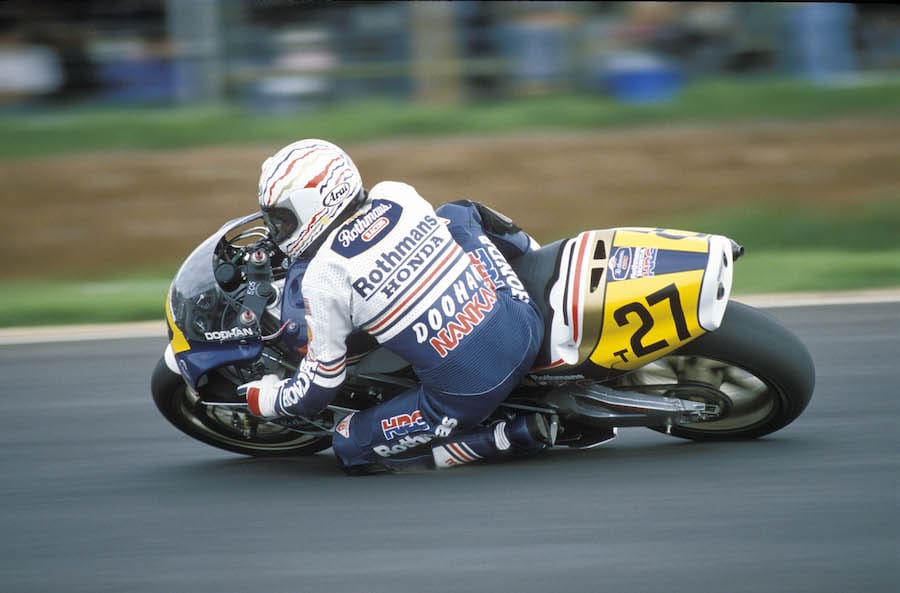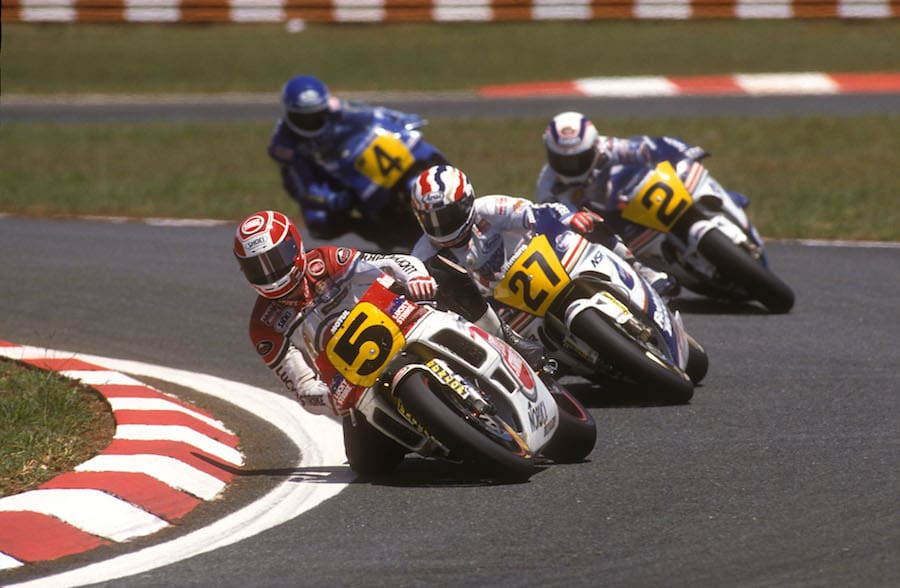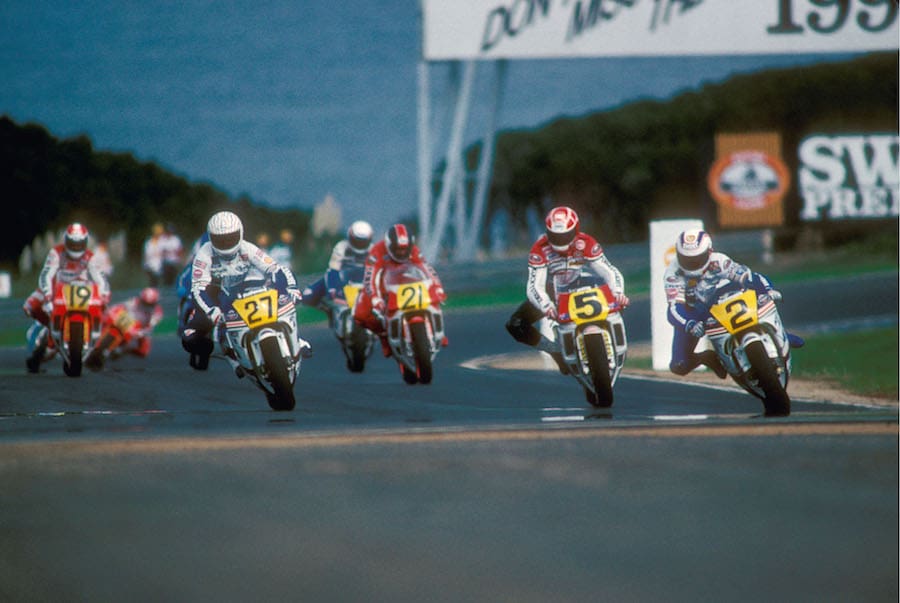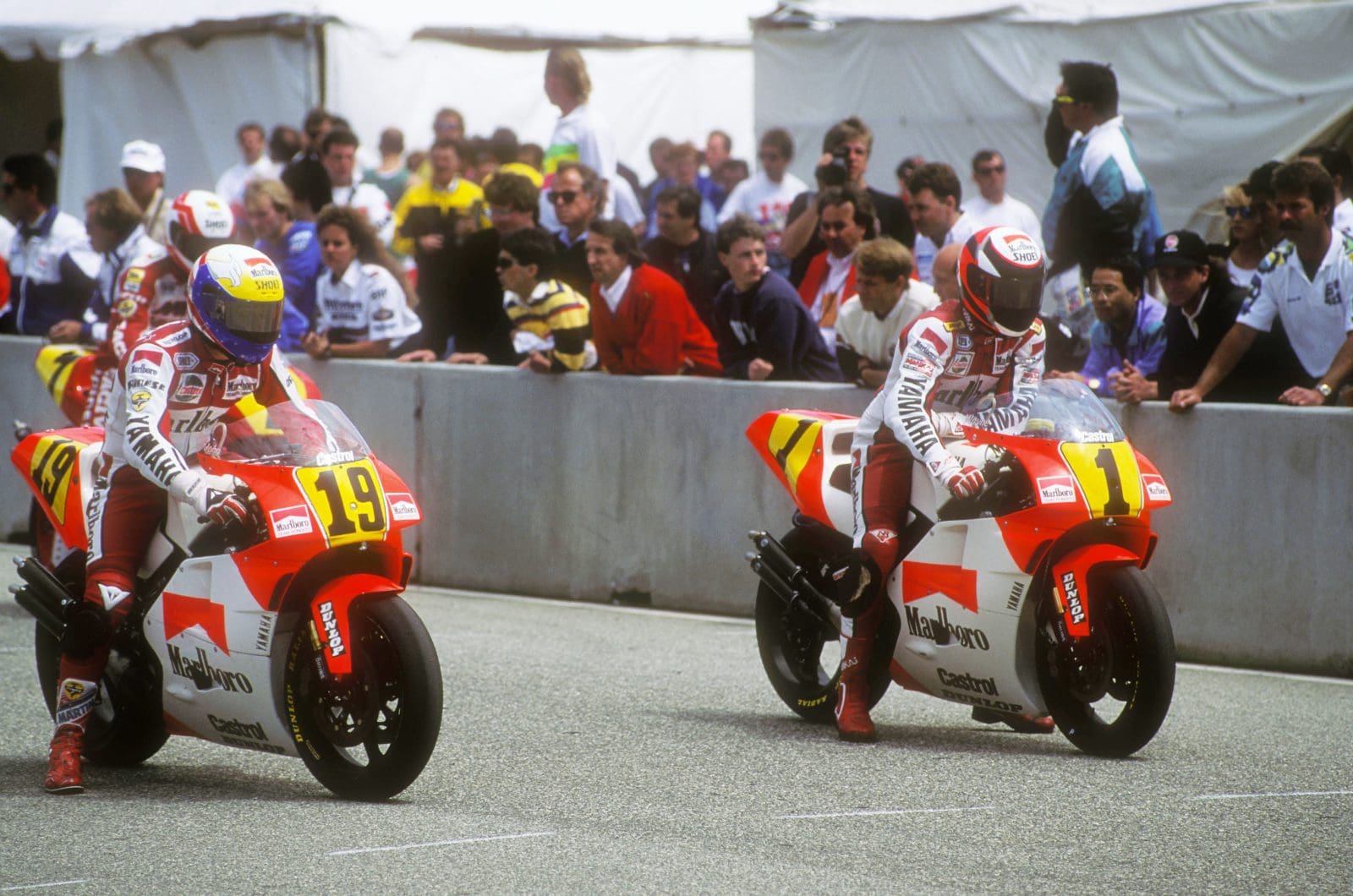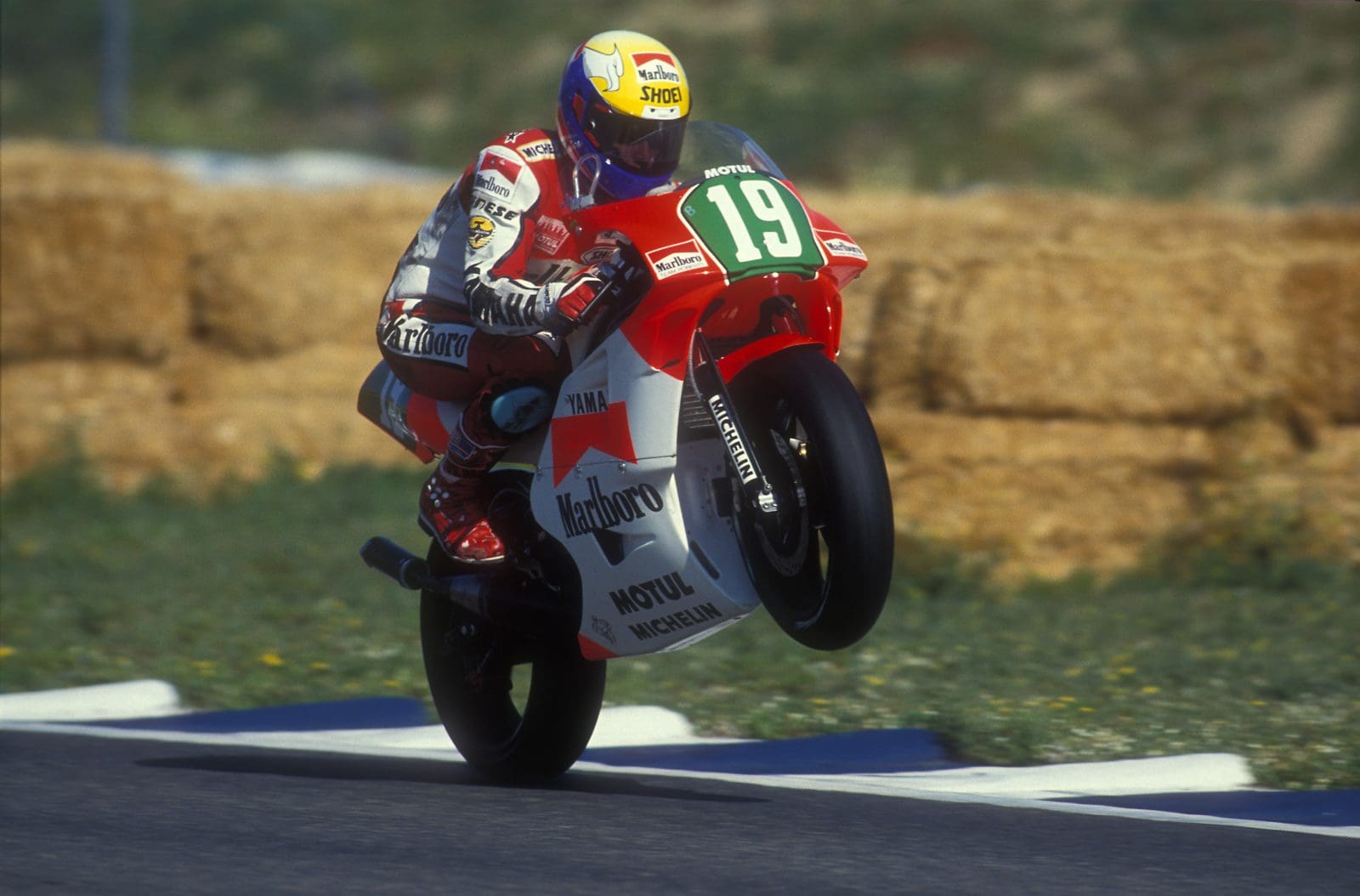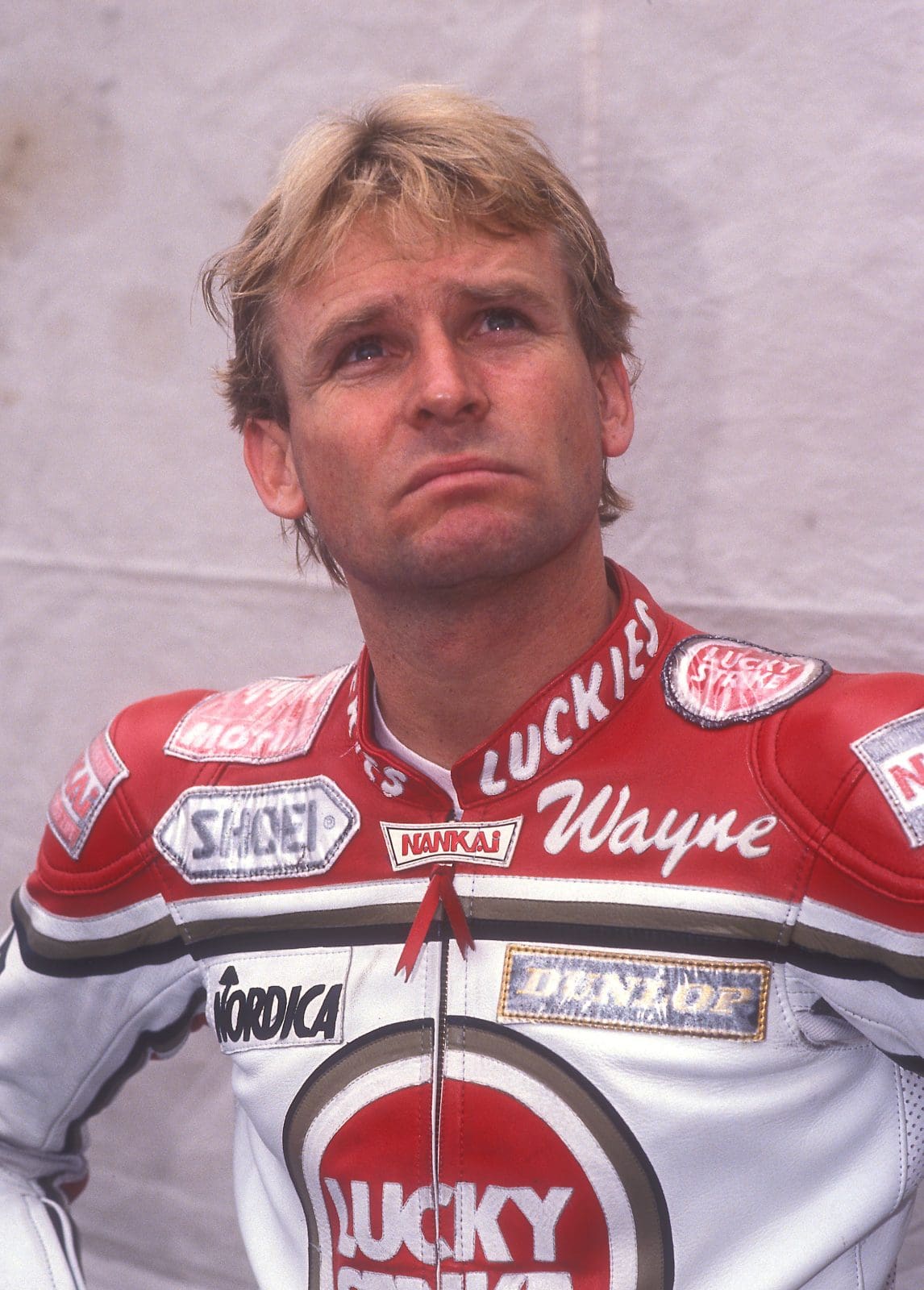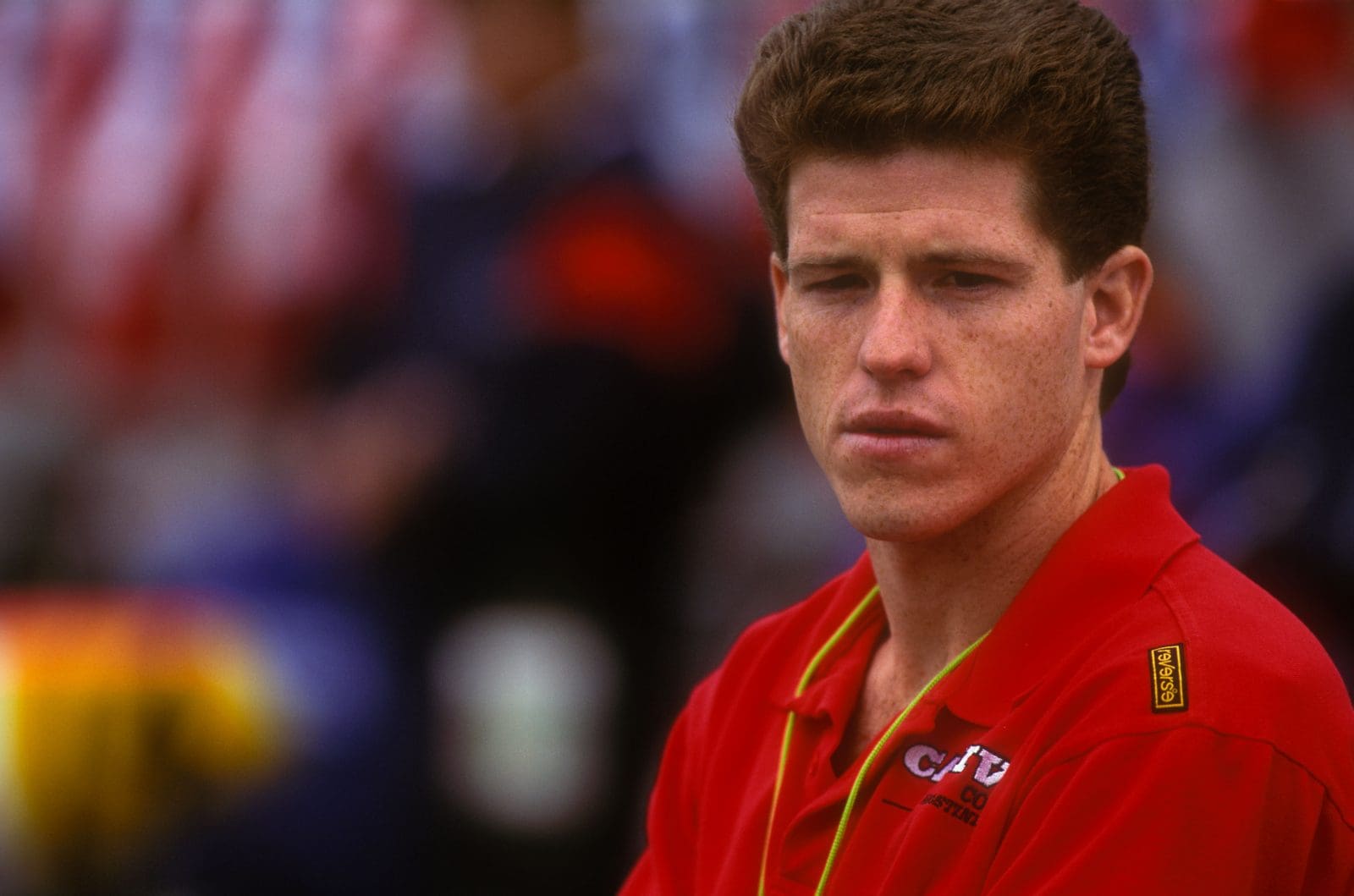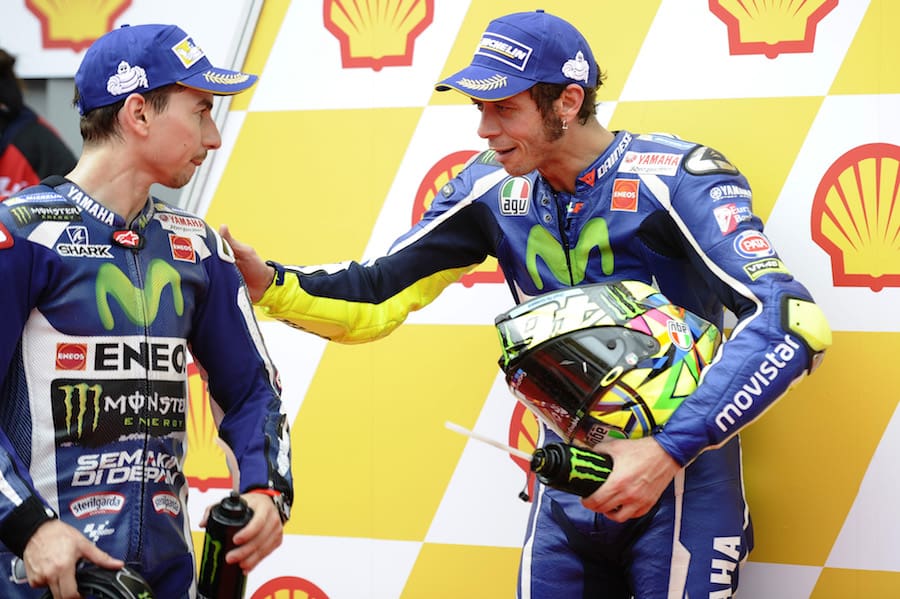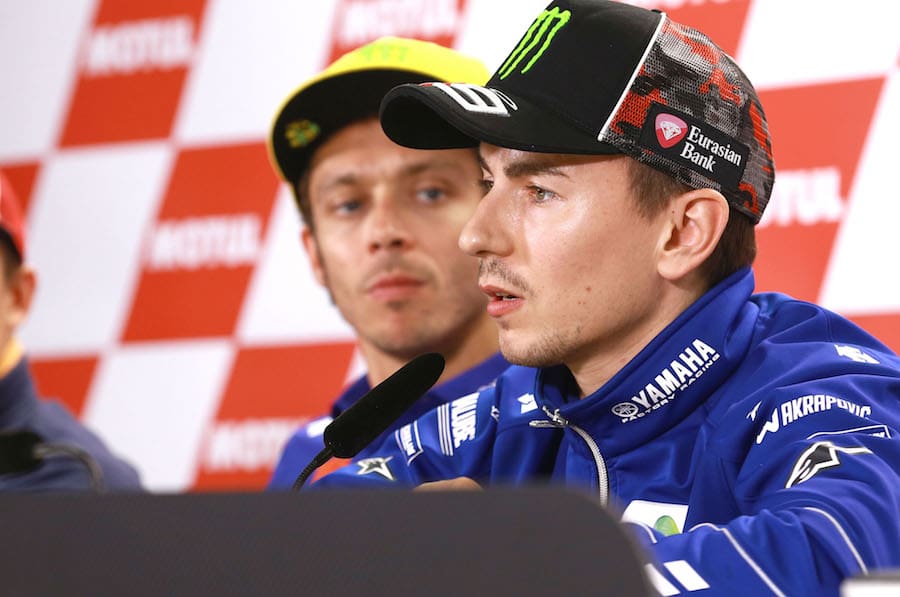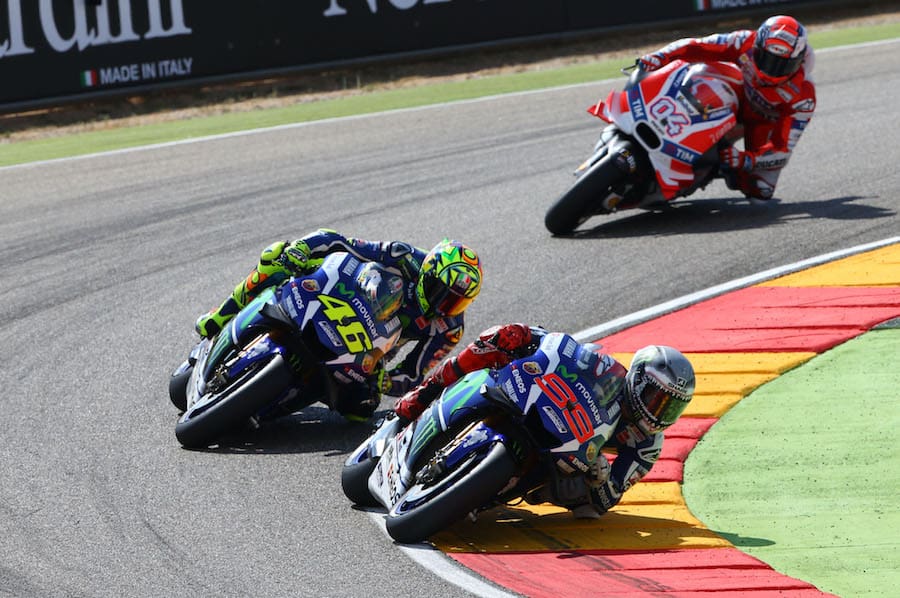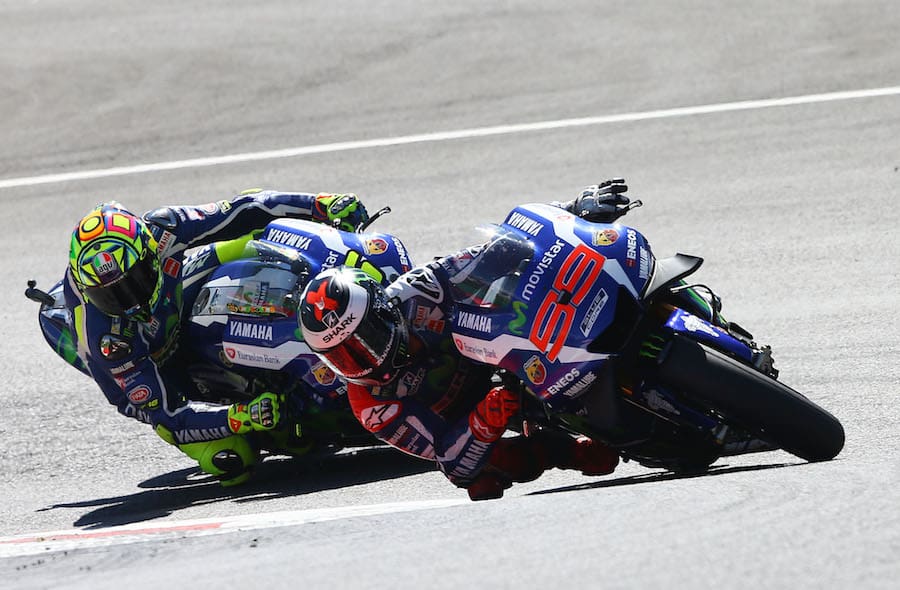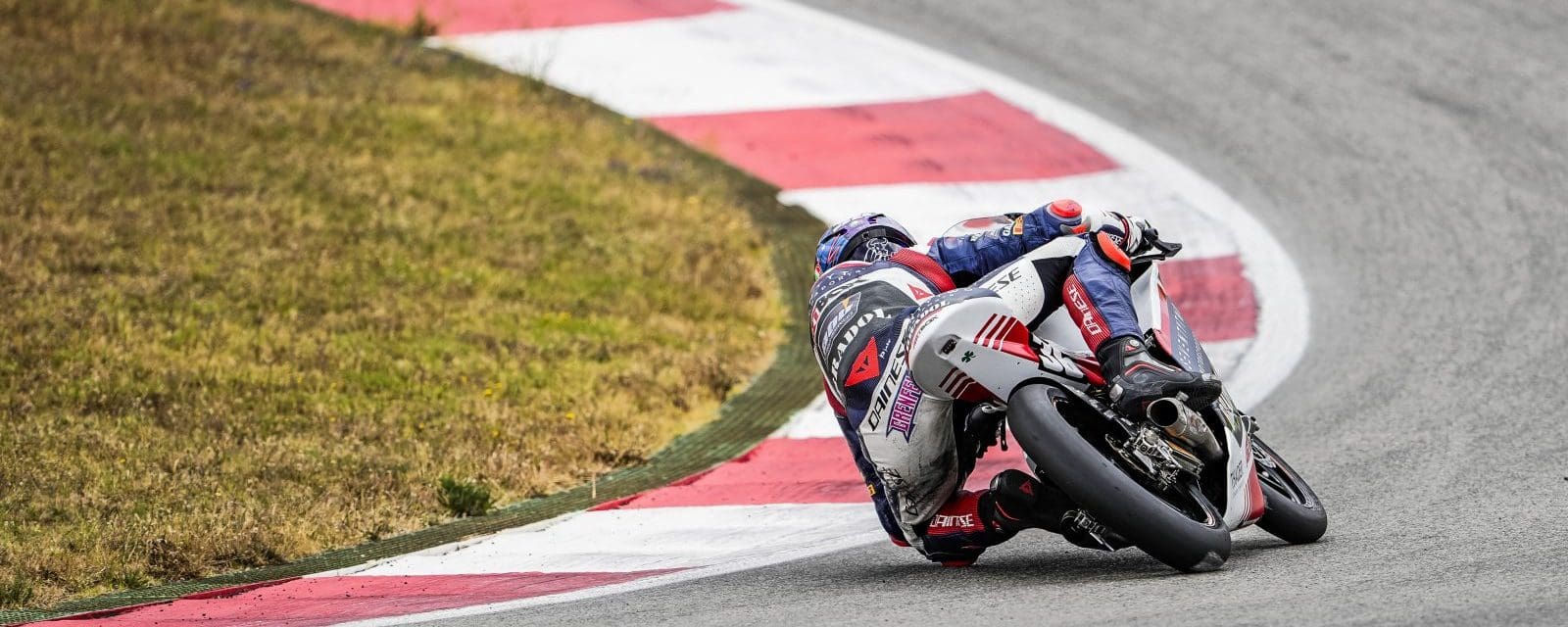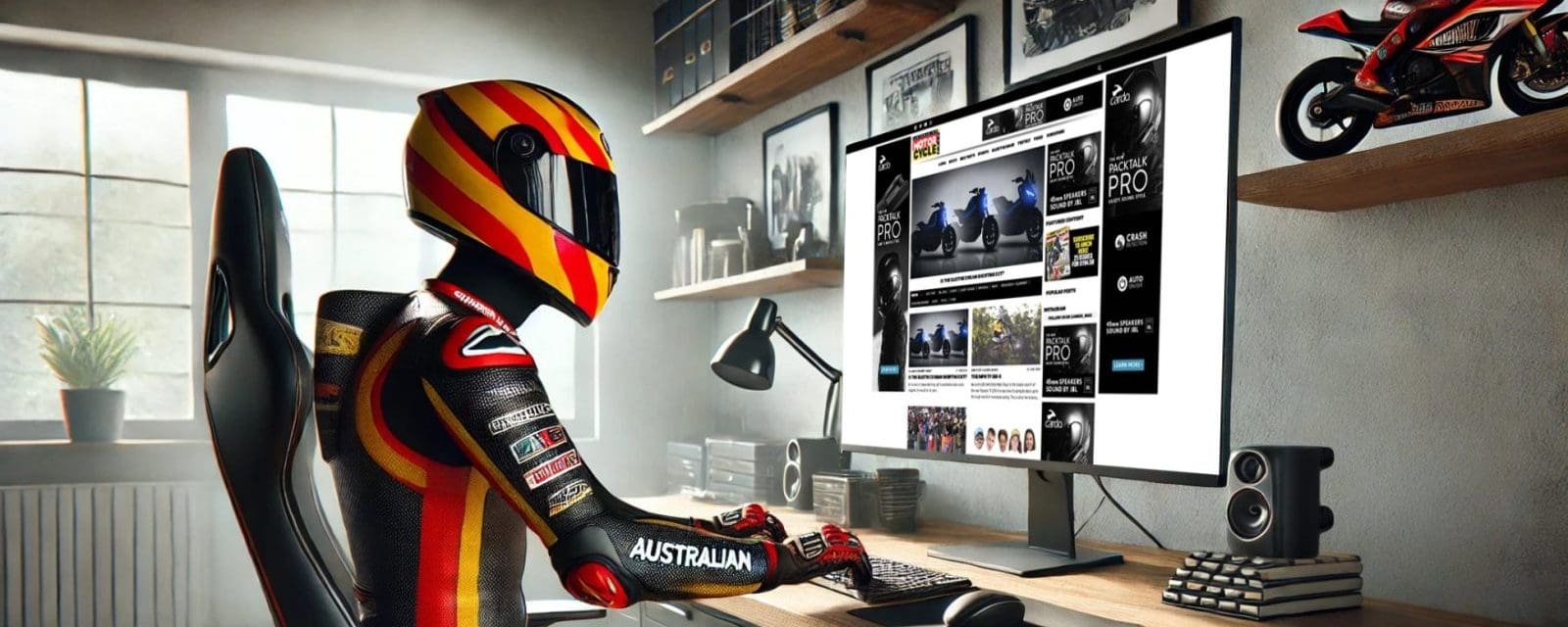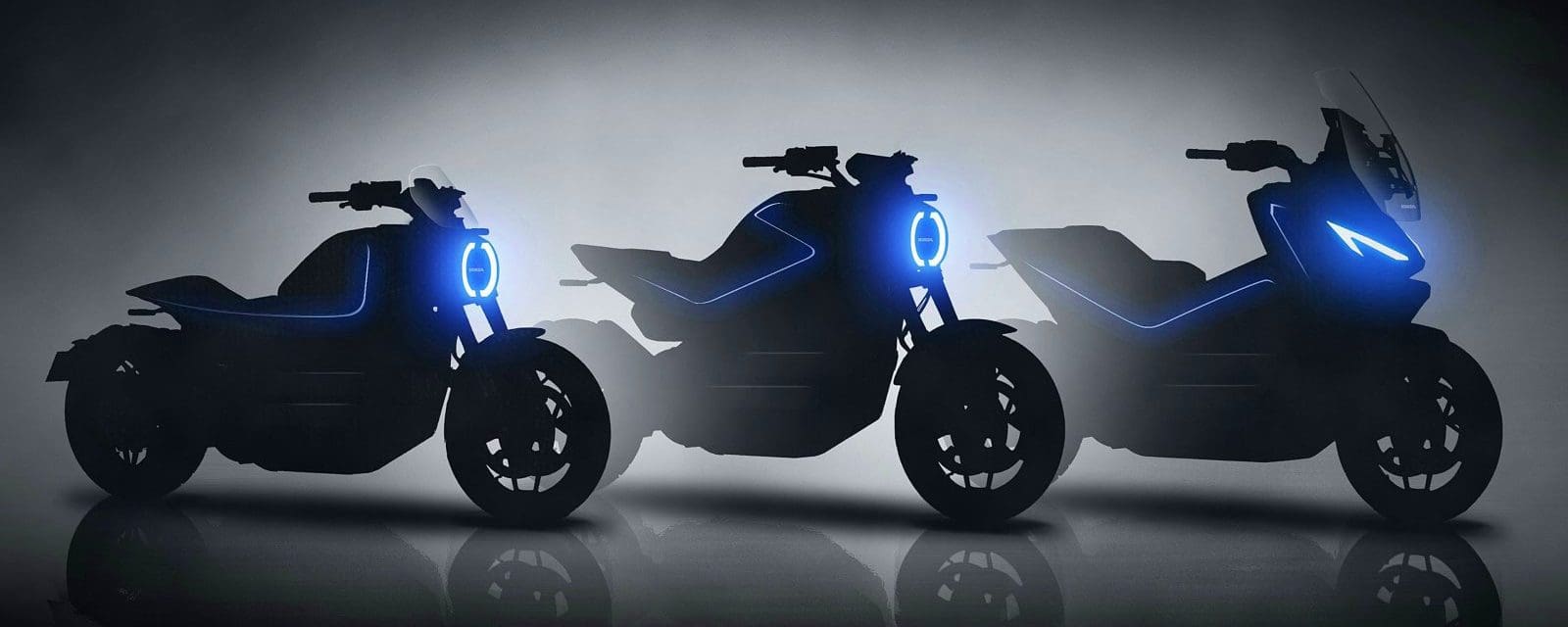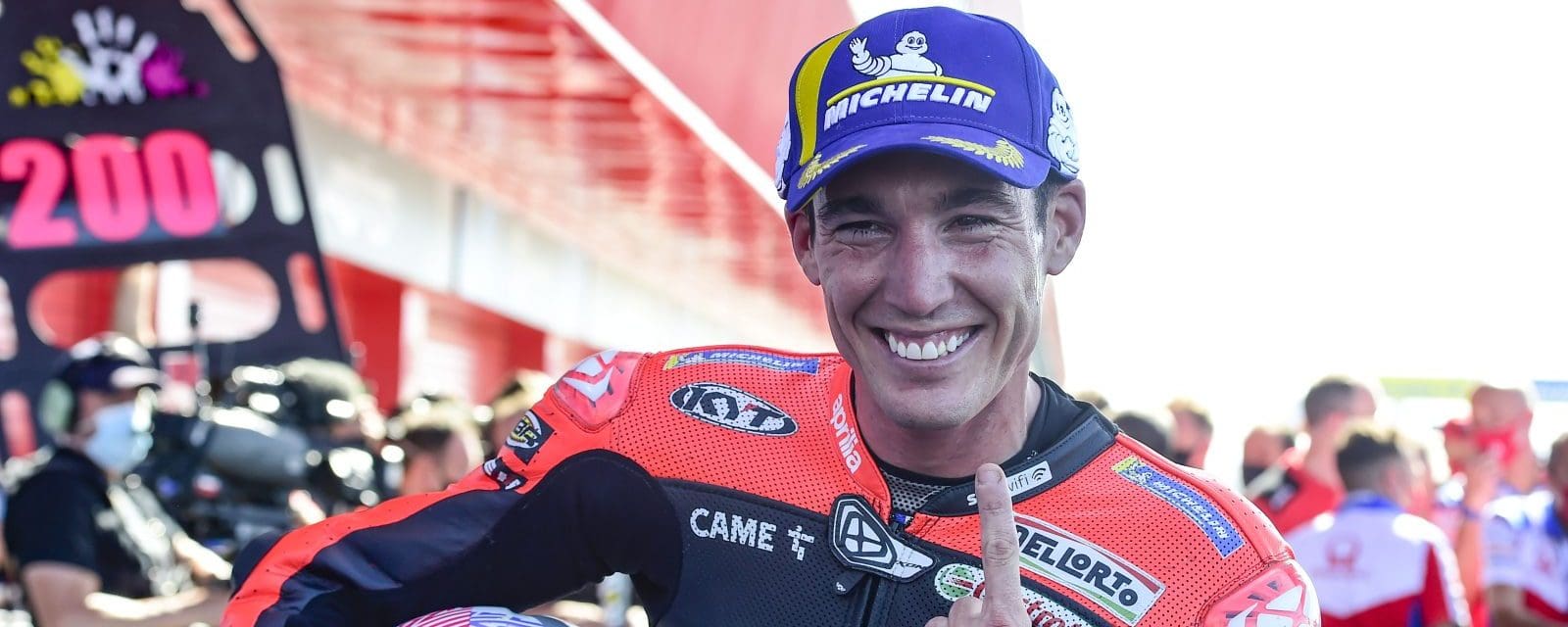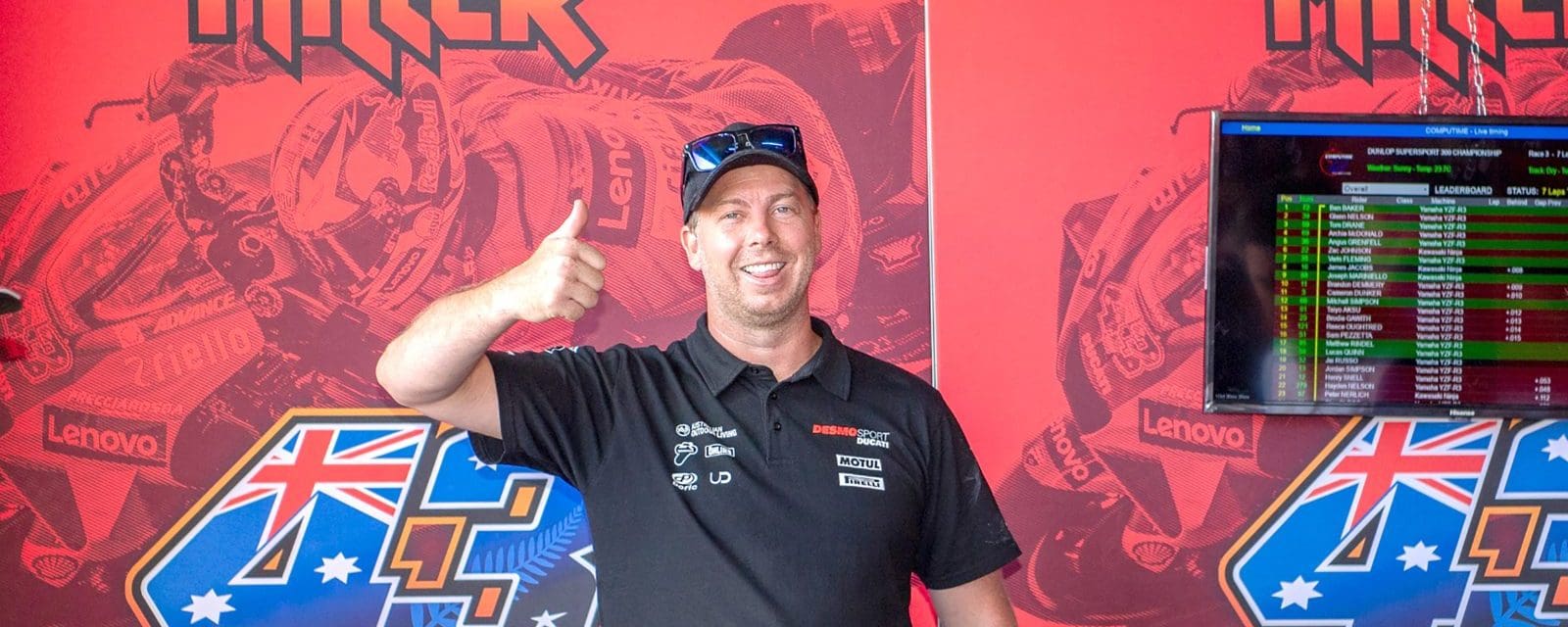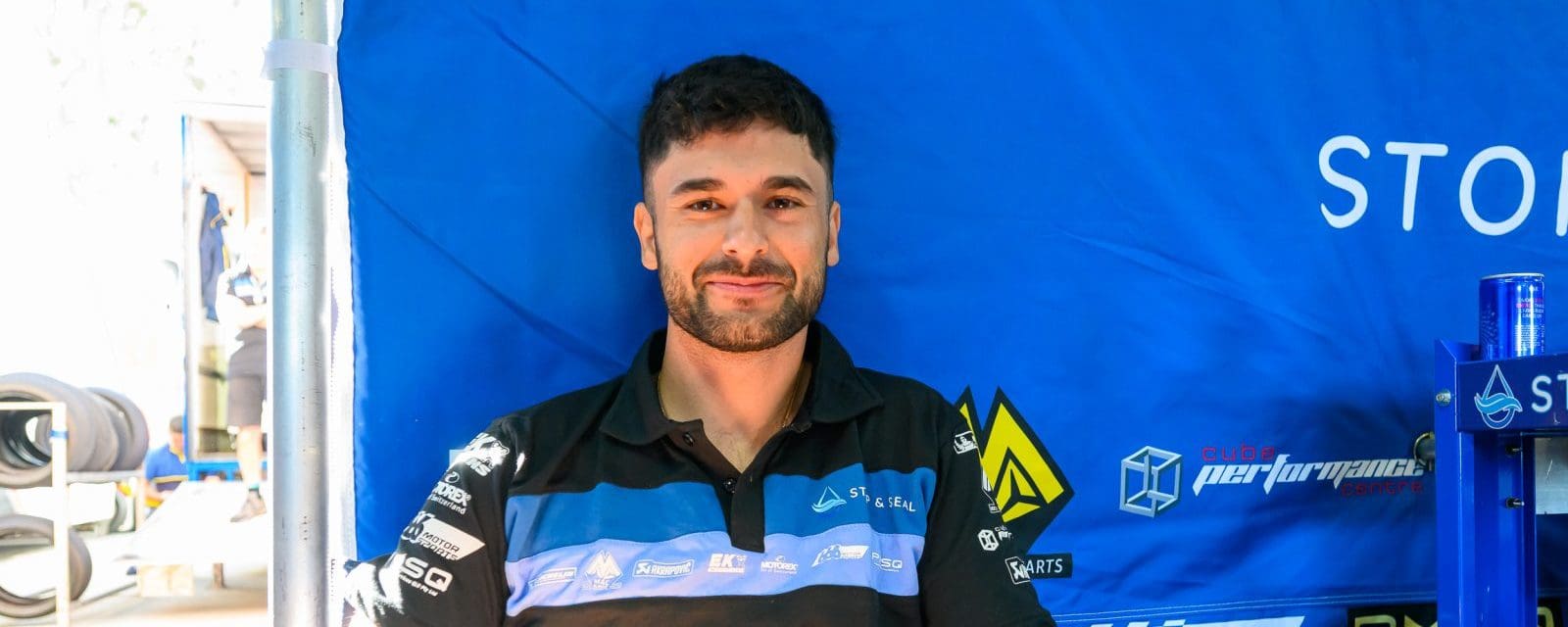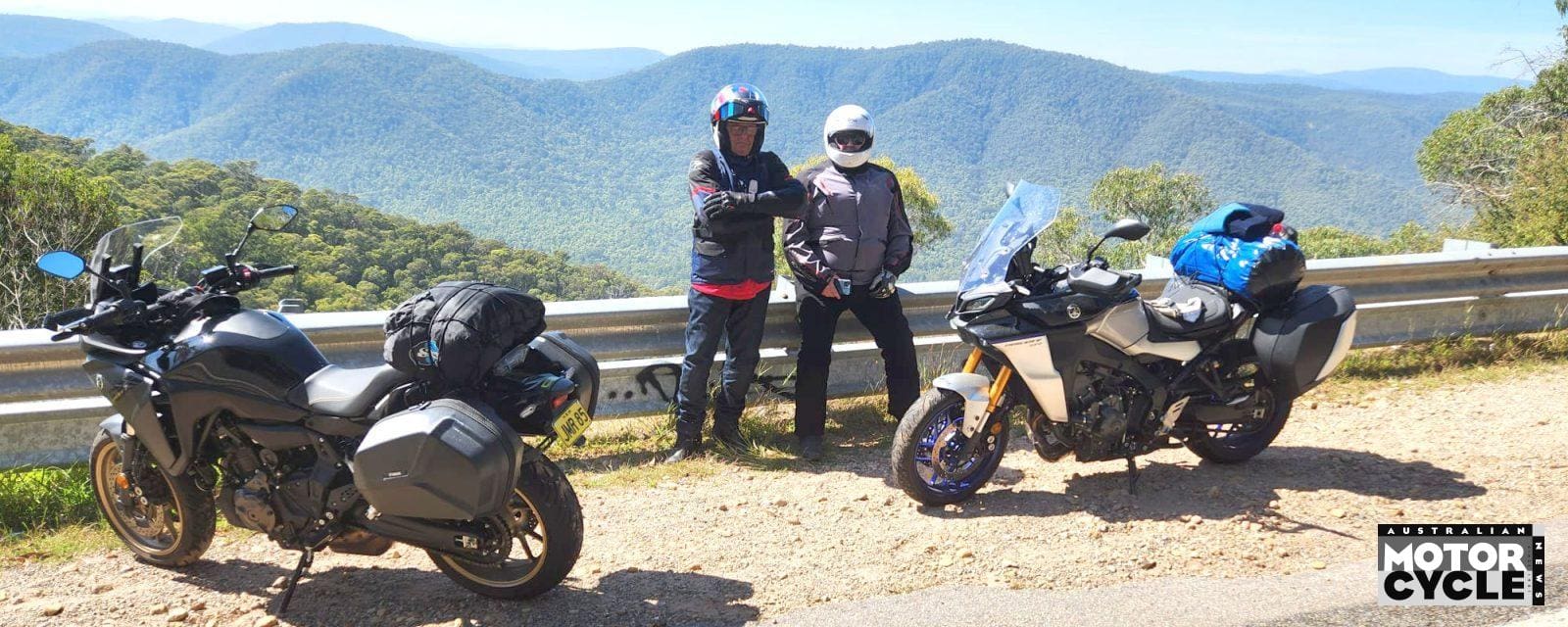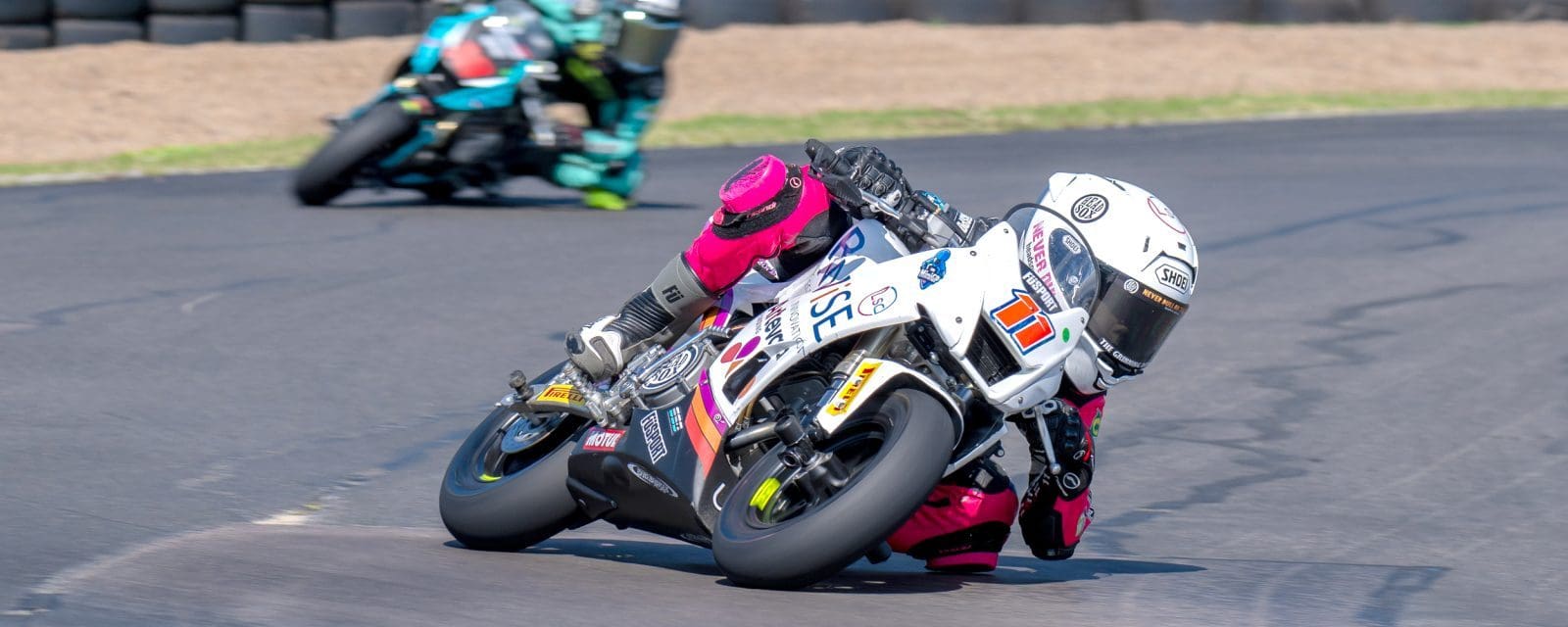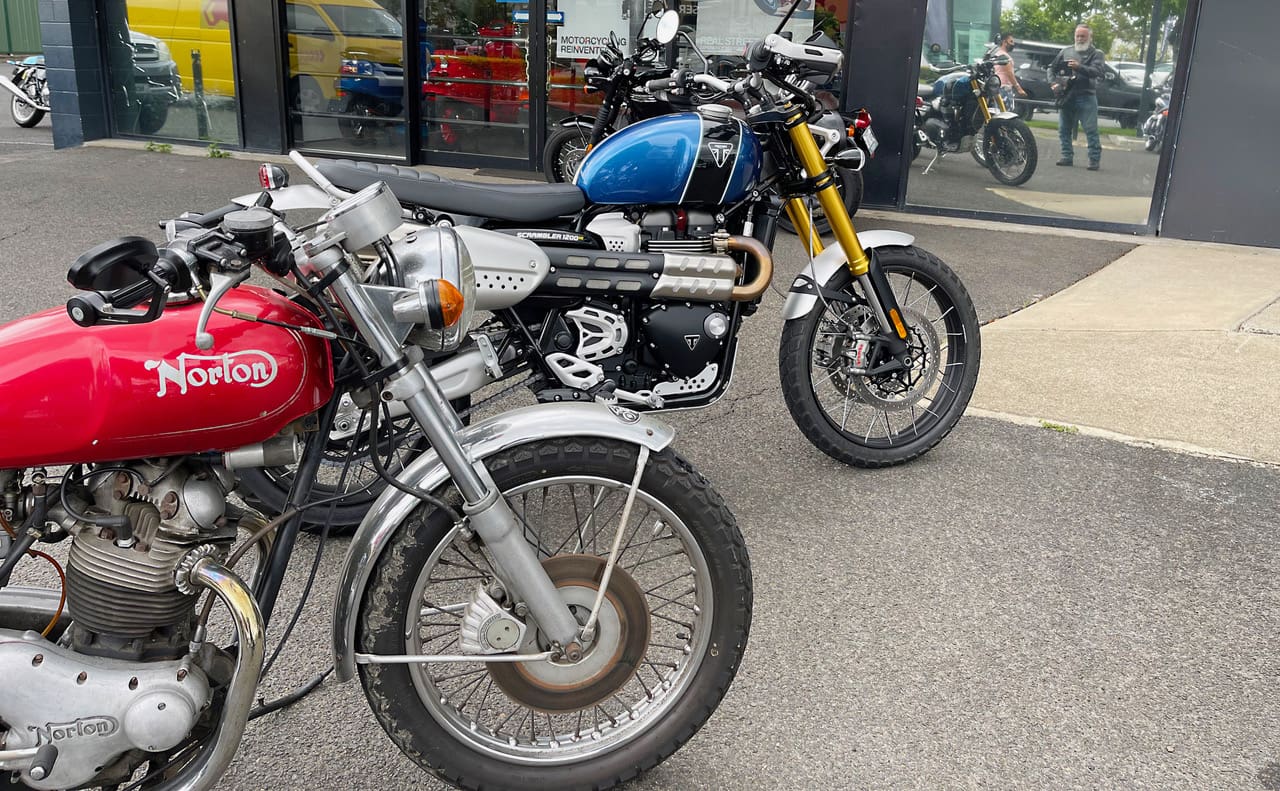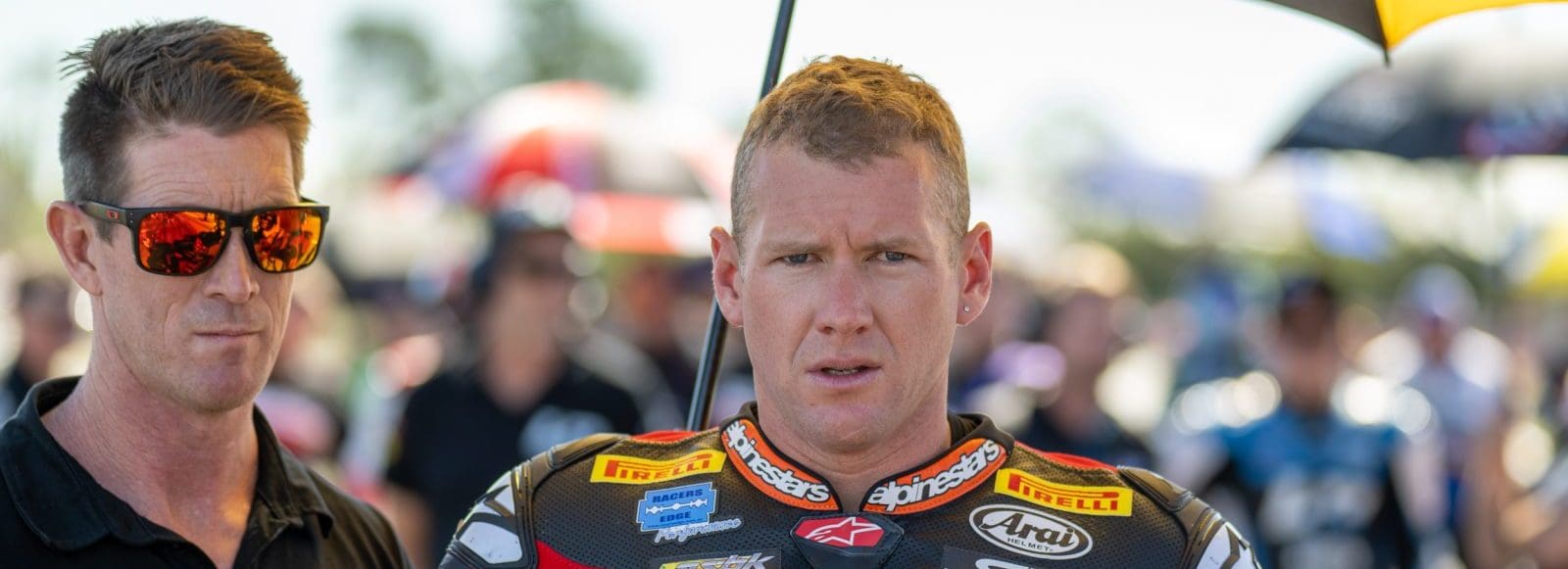The term ‘teammate’ is the greatest misnomer in motorcycle racing. The first person you must beat is your teammate because they’re on the same machinery as you, right? And they receive the same support as well. So whoever wins is the best rider. Maybe.
Back in the day, the number one rider in a factory team would invariably have the best engine, suspension, chassis, brakes and tyres. They would also receive the latest updates first, and the second string rider would have to wait to receive the latest stuff, sometimes until the following season. Then there is the issue of team orders.
In some cases, second-string riders wilt under this regime and leave for greener (or, more often than not, less greener) pastures. But others overcome any real or perceived disadvantages to usurp the numero uno in their team and go onto true and lasting greatness. It is a psychological hotbed that can make or break the very best riders.
Mick Doohan v Wayne Gardner
GP rookie Mick Doohan joined Rothmans Honda in 1989, alongside 1987 World 500cc Champion Wayne Gardner and then reigning three-time 500 champ Eddie Lawson. Gardner was already upset after learning of Lawson’s shock defection from Yamaha to Honda for 1989, from a newspaper.
Sensing that he had more in common with the laconic Californian than his countryman, Doohan struck up a close friendship with Eddie and it created the beginnings of a schism between the two Aussies that is said to have endured for years.
After a number of falls and injuries, Doohan uttered the immortal words as he heard the bike wailing away in pitlane: “Have I really got to throw a leg over this thing?” But a string of podiums and top five finishes instilled much-needed stability into the Doohan psyche, and he headed into 1990 knowing he’d tamed one beast of a motorcycle.
However, as in 1989, Doohan wasn’t afforded the same equipment as Gardner, even after 89 champion Lawson moved back to Yamaha for 1990. Ahead of Gardner on points by mid-season, Doohan was fed up with the pecking order on equipment, so he started talking to other teams. With an offer from Suzuki on the table, HRC responded for Brno by sprinkling his NSR500 with all the trick bits. Doohan took pole and at the next round in Hungary and broke through for his maiden grand prix victory. It was a pivotal moment. With equal equipment, the answer was provided:‒ Mick delivered a 14-second demolition that set up the stunning Doohan-Gardner duel at the 1990 Australian Grand Prix.
Doohan signed again for 1991, and took a lead in developing the latest NSR500. It was from this moment that Doohan would go on to become the most dominant rider of the 1990s, and one of grand prix racing’s greatest legends. Gardner retired at the end of 1992.

John Kocinski v Wayne Rainey
Lead riders must maintain a psychological stranglehold over their teammate to ensure their dominance. Wayne Rainey understood this more than most.
When Eddie Lawson switched from Honda to Team Marlboro Roberts in 1990 to partner Rainey (who he had defeated the previous year), Eddie may have assumed number one status by virtue of his four world titles to Rainey’s none. Not a chance.
Any fireworks between the pair was initially snuffed out when Lawson suffered a broken heel in the second round at Laguna Seca when a brake pad fell out, putting him out for several months. But it blew up four months later, when Rainey clinched his first world title with a win at Brno, 20 seconds clear of Lawson. Eddie believed Rainey was getting preferential treatment and exploded at the team after the race, leaving in a trail of dust, missing the press conference and then falling into the arms of the uncompetitive but cashed-up Cagiva squad for his final two years of GP racing.
Rainey’s next teammate was an altogether different proposition – the quirky and brittle John Kocinski, who had taken the 1990 250 GP title for Team Roberts. The oddball 500 rookie possessed searing confidence and an unworldly take on life, and Rainey knew he would be a threat on the Yamaha. Rainey later told Michael Scott, “Being faster than John was more important to me than any other teammate … I knew by the end of the year one of our careers would be ruined.”
At the first test at Eastern Creek, Kocinski was dawdling down the front straight mid-track at about 140km/h running in pistons. Rainey was on a flying lap, and pulled over to miss Kocinski by a metre at 275km/h. It was on.
Later in the press conference, Kocinski was asked if he was going to treat 1991 as a learning year on the 500. Looking yours truly square in the eye, and with Rainey seated nearby, Kocinski snarled, “I’m gonna learn as I win”. Rainey sat impassively, but the tension was palpable. When Kocinski was asked what he thought about the new ’91 scoring system where the worst two results would be dropped, he barked, “I don’t give a shit, it’s my first year racing 500s. I’d be wasting my time and the team’s money if I don’t win.”
It all unravelled just three rounds in at Laguna. Rainey grabbed pole from JK, then made his usual jackrabbit start. By the time Kocinski had levered his way into second place, he was four seconds adrift. Making a rookie error trying to make up time, he hit a ripple strip at Turn 3 and crashed out. Kocinski left the track furious and refused to stop his car when police tried to question him. He ended up in jail. “John was never really a problem after that,” Rainey said with some understatement.
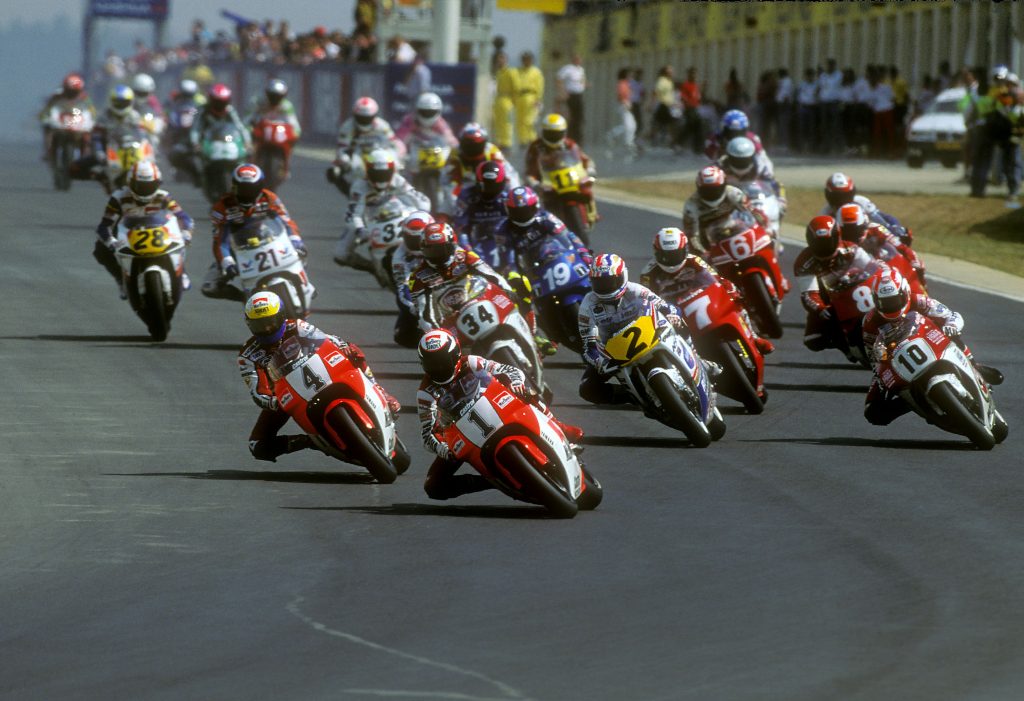
Valentino Rossi v Jorge Lorenzo
If team pecking order in the 1980s was largely about titanium, tyres and team orders, this all became less relevant as the notion of equal equipment became a reality, not to mention the advent of control tyres. What really began to matter by the late ’90s was availability of set-up data and access to the best crew chief.
When Lorenzo joined Yamaha in 2008, Rossi confronted this situation and used his considerable power to prevent the Majorcan rookie from snooping at his data; thus the famed ‘Fiat Yamaha wall’ that split the garage, justified on the basis that Lorenzo was on Michelins, Rossi on Bridgestones. Announcing the arrangement, Rossi and team boss David Brivio spoke at length about how both riders would still be able to express themselves freely. When it was his turn to talk, a sullen Lorenzo simply said, “I don’t have anything to comment on this”.
In 2009, as Lorenzo became a real threat to Rossi. Members of Lorenzo’s entourage cheekily suggested that Rossi now might be looking at Jorge’s data. Yamaha laid it to rest in 2010 by publicly declaring the wall a no-go zone for Rossi as well.
With Rossi injured in a training accident in early 2010, Lorenzo took the upper hand in the early rounds. And in a scenario eerily similar to Doohan in 1999, when he’d crashed heavily in practice at Jerez in a bid to restate his dominance over a surging Kenny Roberts Jr, Rossi had a similar high-speed spill to Mick’s that saw him miss three rounds. It was rumoured that on the morning of the crash Rossi had issued Yamaha with a final ‘it’s me or him’ ultimatum on who they signed for 2011. With his ability to apply pressure to Rossi and sell himself as the face of the future, Jorge levered Rossi out of Fiat Yamaha, with whom he had won four MotoGP titles – and became its number one rider.
Ironically, Rossi himself thought Lorenzo had what it took to continue the development of the M1. “I think that Jorge, already in 2008 but especially last year, demonstrated a good attitude to fix and set up the bike,” said Rossi before 2010 kicked off. “At the end it doesn’t change a lot because all the comments made by me and Jorge are quite similar.” Prophetic words, since Rossi struggled to regain his speed on the 2013 Yamaha (after two terrible years at Ducati) but hit back in 2015 to lose the title after being sanctioned for his collision with Marc Márquez at Sepang, Lorenzo taking the crown.
The tension simmered through 2016 and came to an explosive head at Misano in September when the two argued in a post-race press conference over an aggressive passing move made by Rossi. “He didn’t need to make this overtaking,” Lorenzo fired off. “But you know, it’s his style; other riders overtake more clean.” His next sentence was interrupted by a laugh from Rossi, which triggered a tense exchange between the Yamaha teammates.
“It’s not true. Try to look, another time, at the overtake,” Rossi barked.
“If I don’t put straight the bike, we crash together. Maybe you don’t crash, but I crash,” Lorenzo shot back. Lorenzo later criticised Rossi for talking when other riders were answering questions, something for which Rossi is infamous.
Murray Sayle v Gregg Hansford
In late 1974, up-and-coming star Murray Sayle was offered some guest rides on Team Kawasaki Australia’s spare Kawasaki H2R 750 triple. The following year the team fielded a formidable line-up of key new signing Gregg Hansford, Ron Toombs and Sayle, who was forever in the shadow of golden-haired Hansford.
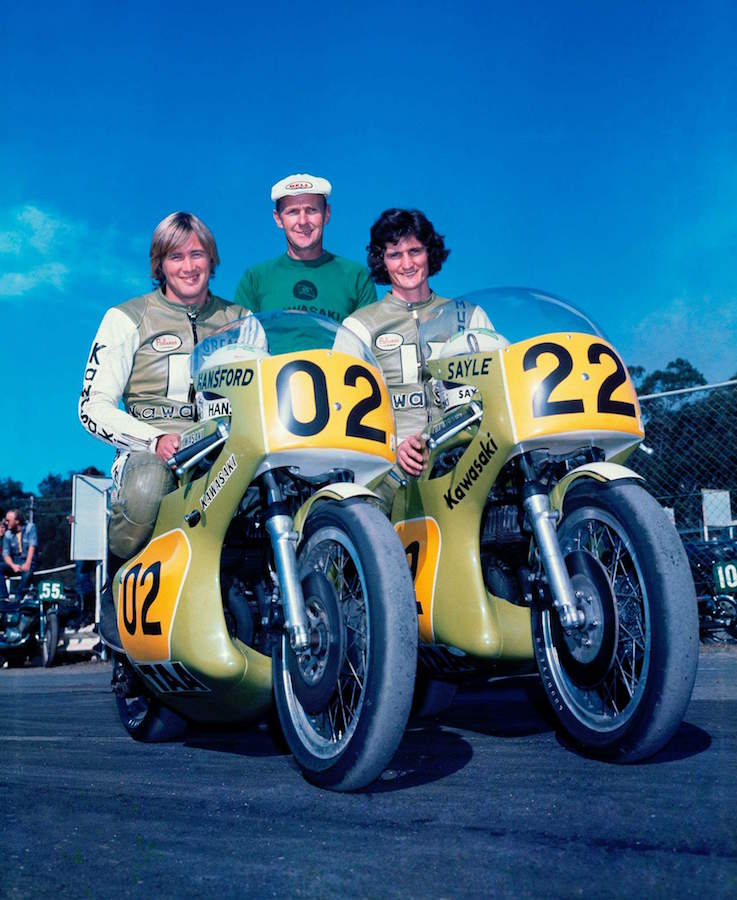
At Daytona in 1977, Team Green debuted the single rear-shock, Uni-track, 360º crank, KR250 tandem twin, a bike Sayle rode to great success Down Under. Ironically, it was that success that led to his departure after team orders came into play in the 1977 Marlboro Series in New Zealand.
“We had two new 250s and an old [180º crank] 250. Neville fitted it with a new engine and laid-down shocks, and let [New Zealand-born Yamaha-privateer] Rick Perry ride it,” Sayle explained.

“I finished second in the 250 series behind Gregg, by a point. I won two races, Gregg won the rest but fell off a couple of times. They were good, tough races. It came down to the last race at Ruapuna. I fouled a sparkplug on the line – which never happened – and I made a slow start, but Gregg was sore from a practice crash. For me to win the series, I had to win, and Gregg had to finish second. I made it to the front and Rick was third – and he wanted the ride [at TKA] the following year – and he let Gregg by on the last lap, so I lost the series by a point.”
It was an unfortunate moment, but Sayle is not bitter. “Gregg probably deserved to win the series, but when a teammate slows down like that, it gets you down a bit,” he says.
Does he think he could have bested Hansford if they were on equal machinery? “That’s a very difficult question to answer,” he says. “That’s a very leading question! There were always subtle differences. When we got the KR750s, Gregg got the latest suspension – nothing major, but there were differences. When we had the H2Rs, he had a super-lightweight frame, and with the 250s he had bigger carburettors. I don’t begrudge that sort of thing, but it does get a bit tedious after a while. I did have the opportunity to ride his 250 at Adelaide, and it had about 1000rpm on mine…”
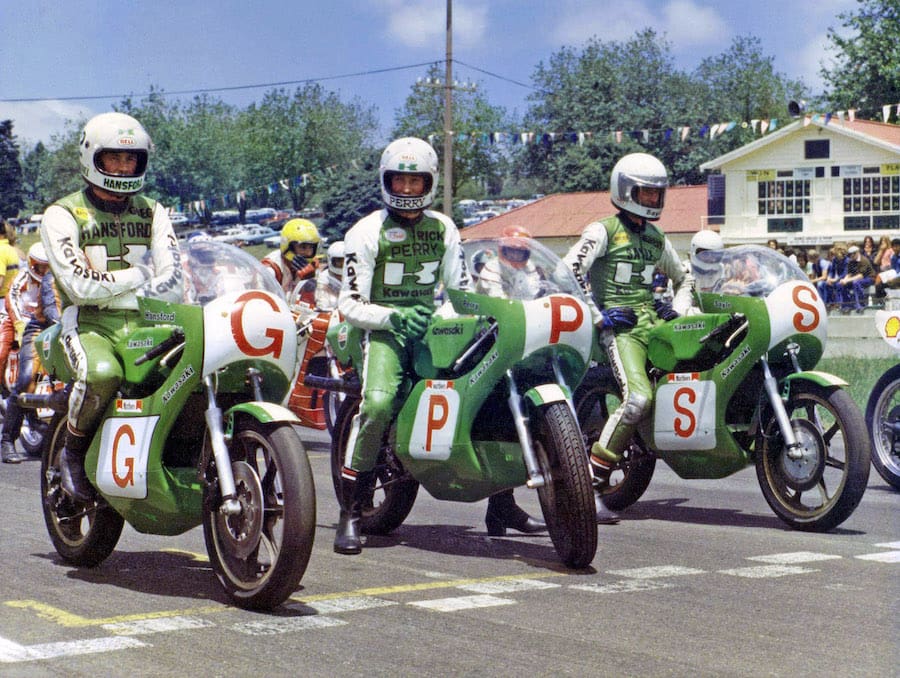
James Toseland v Colin Edwards
If the Jorge v Rossi battle was all about set-up data and plain old-fashioned one-upmanship, the Yamaha Tech3 showdown between Toseland and Edwards was about crew chiefs.
After a patchy debut in 2008, Toseland wanted to step up to become the team’s number one rider. He figured nicking Edwards’ crew chief, Gary Reinders, was the best way to do it. According to Toseland, the switch was necessary to ensure his place in MotoGP, and that the expert skills of Reinders should be allocated to him, not Colin.
“The simple fact is there was a communication problem between Guy [Coulon, the team co-founder] and myself,” Toseland said at the time. “I’m not criticising anybody, but Gary pointed out that he would like to work with me. It’s not a secret that it could be Colin’s last year in 2009, and Gary also wants a longer career in MotoGP, as I do. I can’t have the inconsistency next year, because I don’t want it to be my last year, either.” Oh dear…
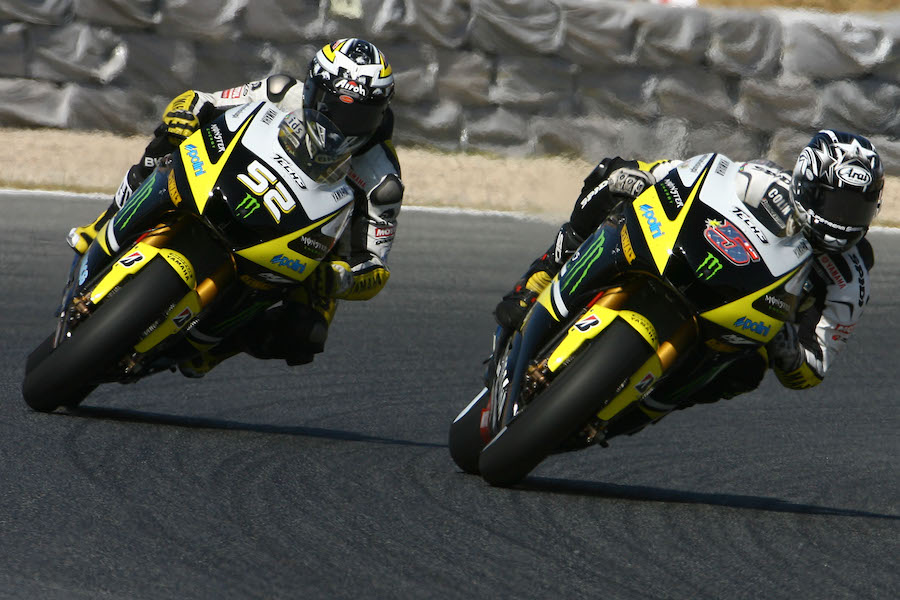
Edwards was seething, labeling Toseland’s plan as “a chicken-shit move”.
“I think he crossed the line,” Edwards said. “The thought of taking my teammate’s crew chief would never have crossed my mind, but I guess I’ve got a different code of ethics than what James has and that’s the part that has pissed me off the most. I won’t lose any sleep over not talking to James.”
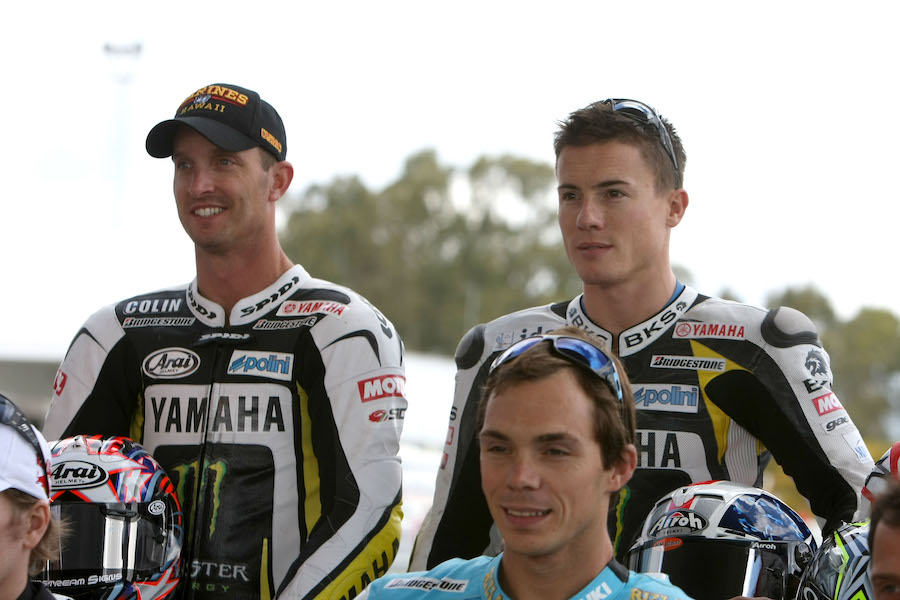
Edwards said Toseland needed to put up or shut-up: “He’s got the best crew chief he believes he can have, so now he’s got to go out and prove it and stop blaming everything else. His only option now is to win races. He’s got no excuses. Now I don’t feel any need to show any respect towards both of them really.”
Toseland struggled to get into the top 10, his confidence and energy sapped. He spiralled into mediocrity under the weight of his high-risk crew-chief poach, limped back to WSBK, and later into early retirement. After forming a close and effective understanding with wooly-haired Coulon, Edwards would endure at Tech3 in 2010 and 2011.
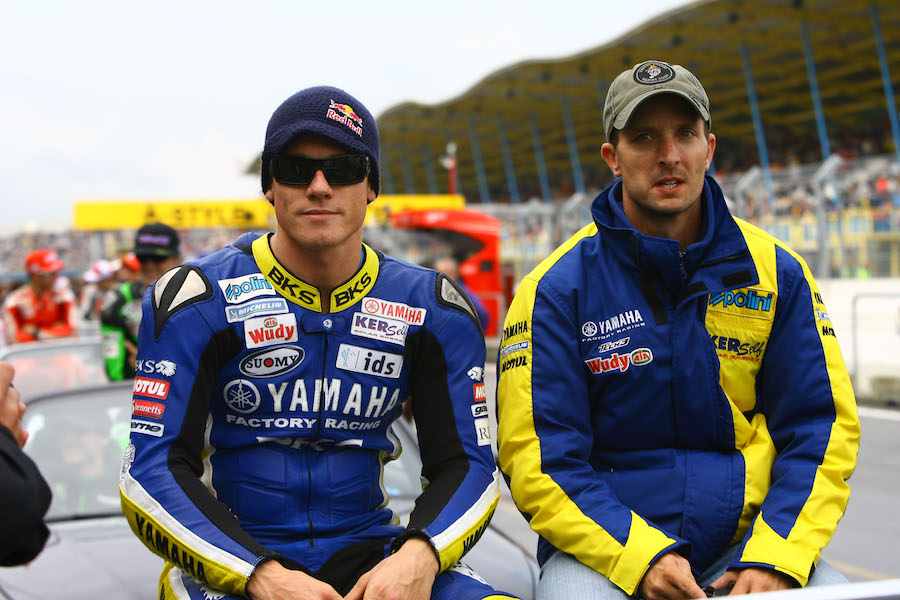
By Darryl Flack

